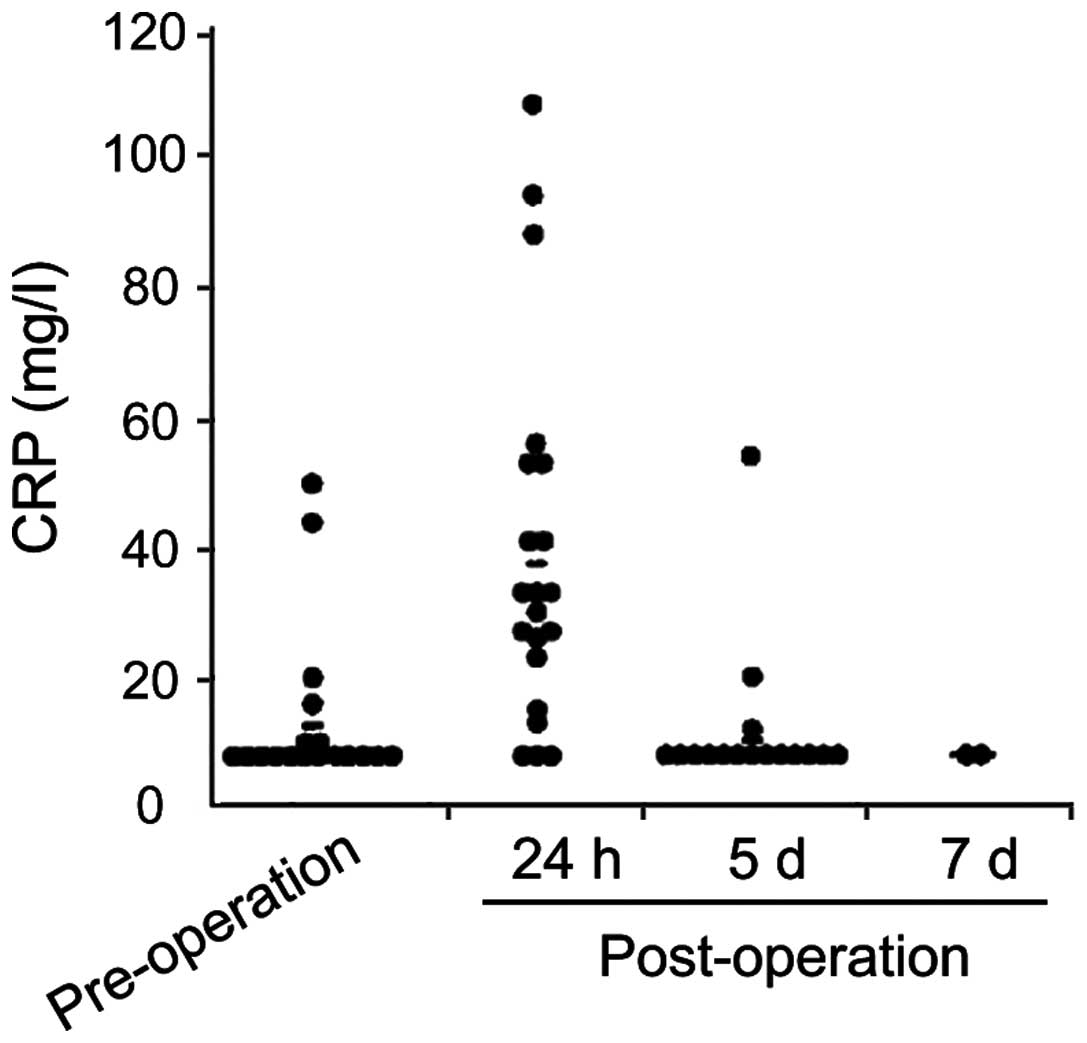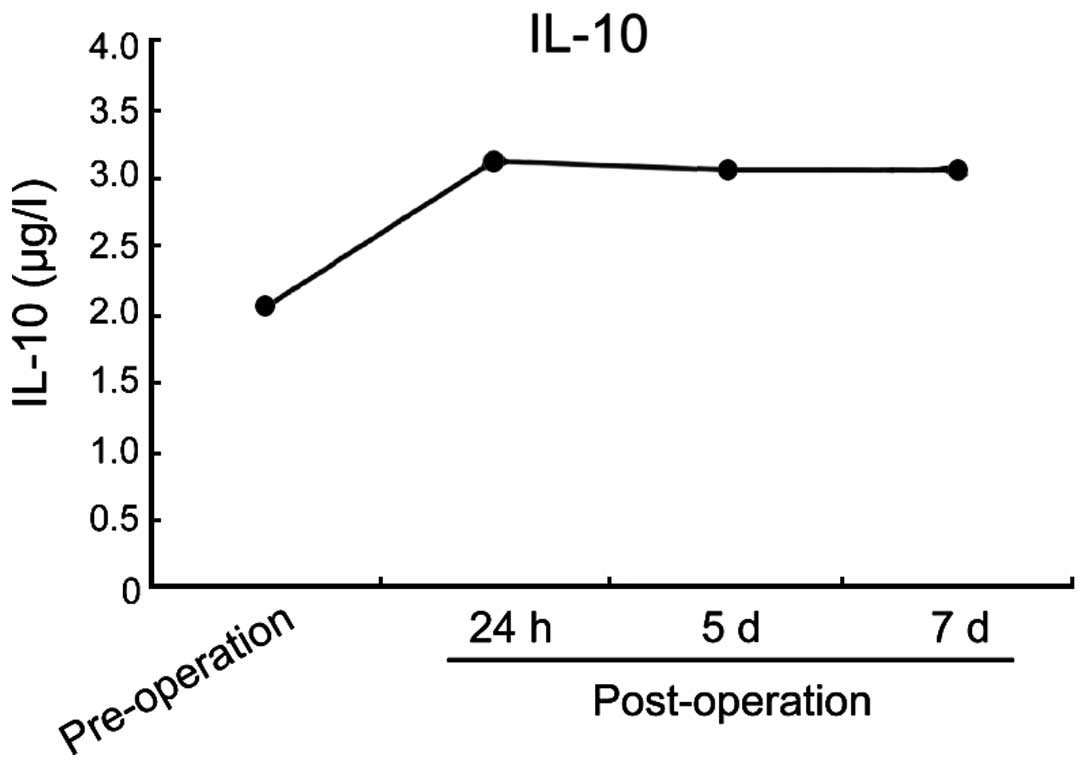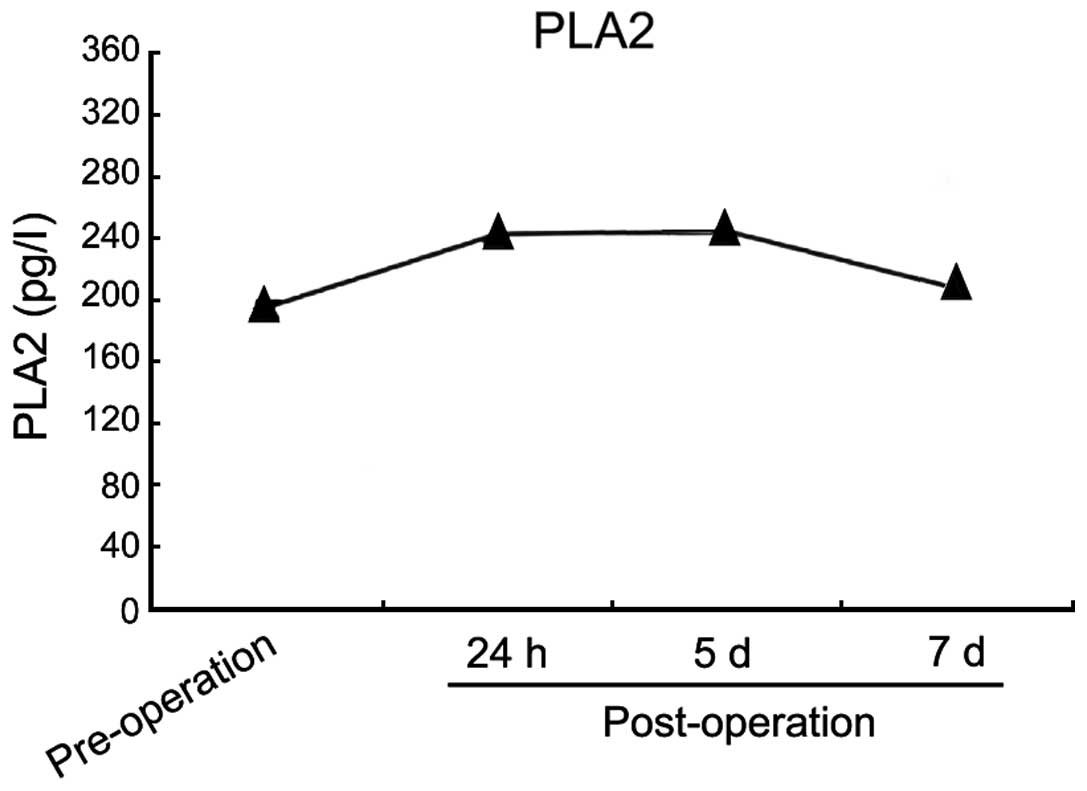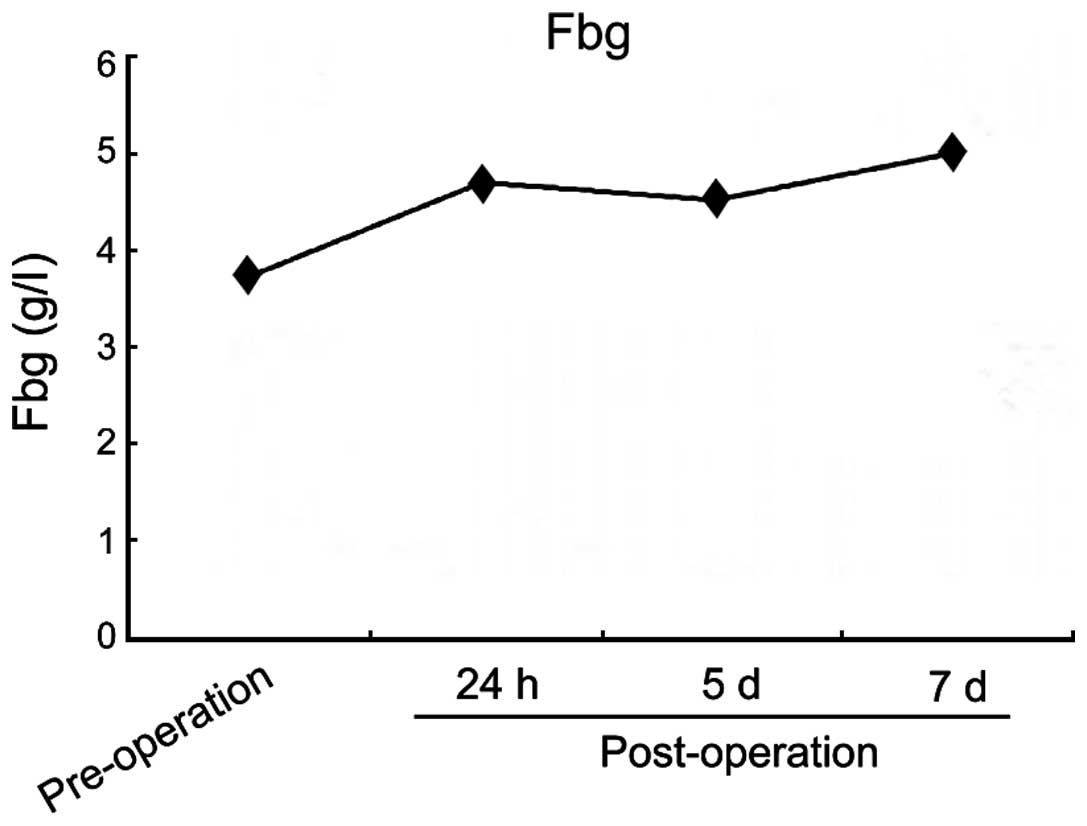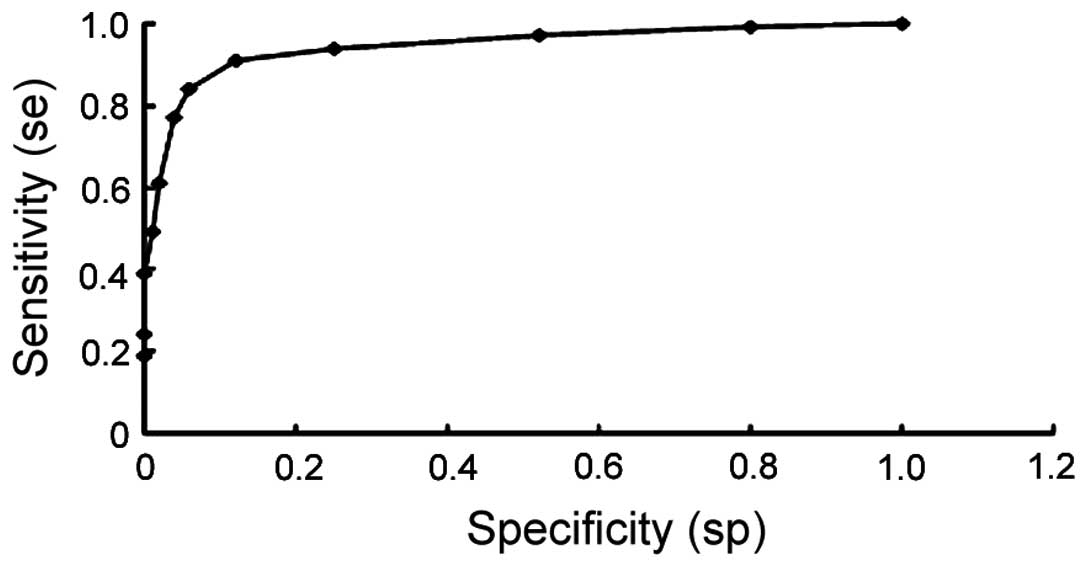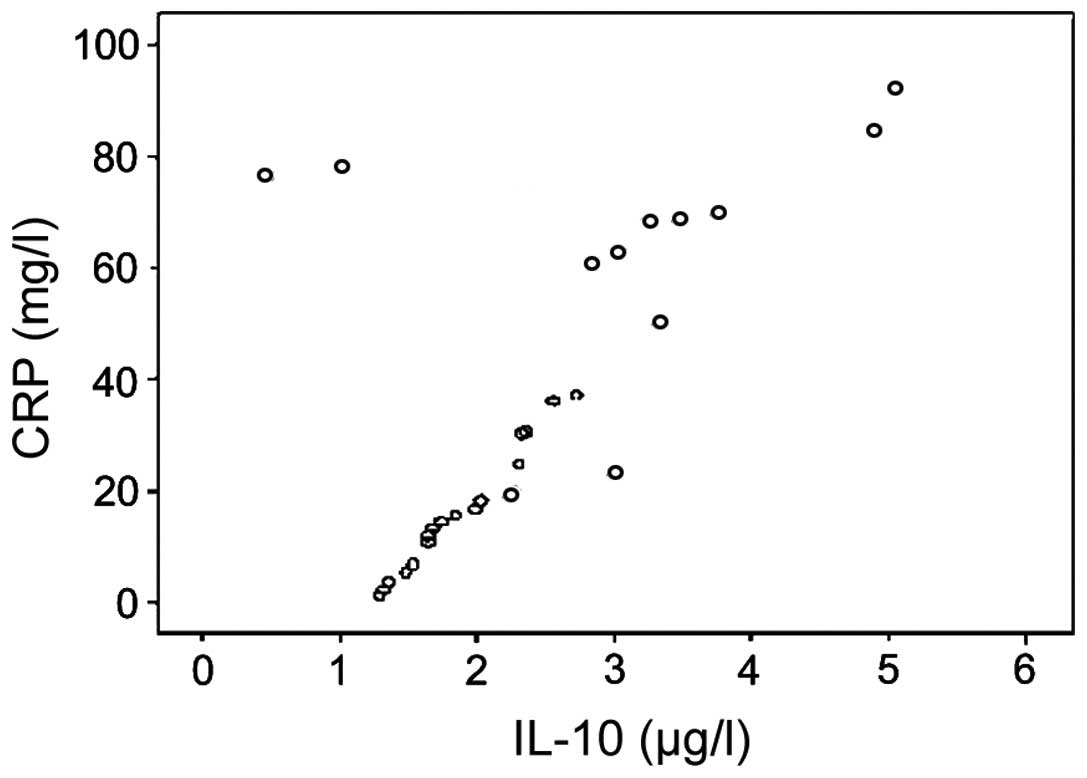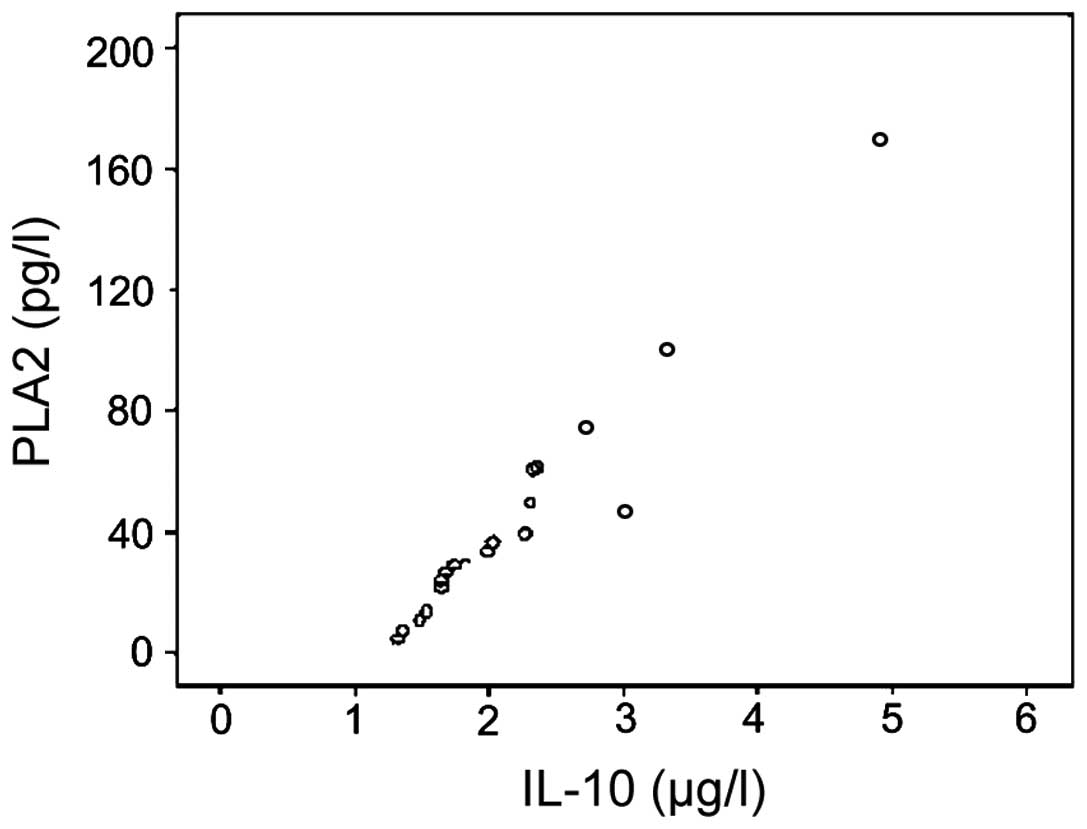|
1
|
Azarpira N, Nikeghbalian S, Kazemi K,
Geramizadeh B, Malekpour Z and Malek-Hosseini SA: Association of
increased plasma interleukin-6 and TNF-α levels in donors with the
complication rates in liver transplant recipients. Int J Organ
Transplant Med. 4:9–14. 2013.PubMed/NCBI
|
|
2
|
Mahar P: Lower extremity trauma. Berman's
Pediatric Decision Making (5th). 442–447. 2011. View Article : Google Scholar
|
|
3
|
Mok JM, Pekmezci M, Piper SL, Boyd E,
Berven SH, Burch S, Deviren V, Tay B and Hu SS: Use of C-reactive
protein after spinal surgery: comparison with erythrocyte
sedimentation rate as predictor of early postoperative infectious
complications. Spine. 33:415–421. 2008. View Article : Google Scholar : PubMed/NCBI
|
|
4
|
Harris AM, Althausen PL, Kellam J, Bosse
MJ and Castillo R: Complications following limb-threatening lower
extremity trauma. J Orthop Trauma. 23:1–6. 2009. View Article : Google Scholar : PubMed/NCBI
|
|
5
|
Gando S: Tissue factor in trauma and organ
dysfunction. Semin Thromb Hemost. 32:48–53. 2006. View Article : Google Scholar : PubMed/NCBI
|
|
6
|
Gando S, Nanzaki S, Morimoto Y, Ishitani T
and Kemmotsu O: Tissue factor pathway inhibitor response does not
correlate with tissue factor-induced disseminated intravascular
coagulation and multiple organ dysfunction syndrome in trauma
patients. Crit Care Med. 29:262–266. 2001. View Article : Google Scholar : PubMed/NCBI
|
|
7
|
Waydhas C, Nast-Kolb D, Trupka A, Zettl R,
Kick M, Wiesholler J, Schweiberer L and Jochum M: Posttraumatic
inflammatory response, secondary operations, and late multiple
organ failure. J Trauma. 40:624–630. 1996. View Article : Google Scholar : PubMed/NCBI
|
|
8
|
Giannoudis PV, Smith RM, Perry SL, Windsor
AJ, Dickson RA and Bellamy MC: Immediate IL-10 expression following
major orthopaedic trauma: relationship to anti-inflammatory
response and subsequent development of sepsis. Intensive Care Med.
26:1076–1081. 2000. View Article : Google Scholar : PubMed/NCBI
|
|
9
|
Lindström T, Gullichsen E, Heinonen O,
Grönroos J, Nevalainen T and Niinikoski J: Group II phospholipase
A2 in serum after knee surgery and intramedullary nailing of tibial
shaft fracture. Injury. 28:169–171. 1997. View Article : Google Scholar : PubMed/NCBI
|
|
10
|
Holtslag HR, van Beeck EF, Lindeman E and
Leenen LP: Determinants of long-term functional consequences after
major trauma. J Trauma. 62:919–927. 2007. View Article : Google Scholar : PubMed/NCBI
|
|
11
|
Simmel S and Bühren V: Surviving multiple
trauma - what comes next? The rehabilitation of seriously injured
patients. Unfallchirurg. 112:965–974. 2009.(In German). View Article : Google Scholar : PubMed/NCBI
|
|
12
|
Manly DA, Boles J and Mackman N: Role of
tissue factor in venous thrombosis. Annu Rev Physiol. 73:515–525.
2011. View Article : Google Scholar : PubMed/NCBI
|
|
13
|
Kim JW, Oh CW, Oh JK, Baek SG, Lee BJ,
Hong HP and Min WK: The incidence and the risk factors of venous
thromboembolism in Korean patients with pelvic or acetabular
fractures. J Orthop Sci. 19:471–477. 2014. View Article : Google Scholar : PubMed/NCBI
|
|
14
|
Yi X, Zhu J, Wei M, Li J, Chen J, Wang Y,
Shen E and Hu B: Risk factors of venous thrombosis in patients with
ankle fractures. Int Angiol. 33:324–328. 2014.PubMed/NCBI
|
|
15
|
Mulsow J, O'Toole GC and McManus F:
Traumatic lower limb fractures following complete spinal cord
injury. Ir Med J. 98:141–142. 2005.PubMed/NCBI
|
|
16
|
Peivandi MT, Yusof-Sani MR and Amel-Farzad
H: Exploring the reasons for orthopedic implant failure in
traumatic fractures of the lower limb. Arch Iran Med. 16:478–482.
2013.PubMed/NCBI
|
|
17
|
Cross AM, Davis C, Penn-Barwell J, Taylor
DM, De Mello WF and Matthews JJ: The incidence of pelvic fractures
with traumatic lower limb amputation in modern warfare due to
improvised explosive devices. J R Nav Med Serv. 100:152–156.
2014.PubMed/NCBI
|
|
18
|
Besemann M: Physical rehabilitation
following polytrauma. The canadian forces physical rehabilitation
program 2008–2011. Can J Surg. 54:S135–S141. 2011. View Article : Google Scholar : PubMed/NCBI
|
|
19
|
Rowley AH and Shulman ST: Recent advances
in the understanding and management of kawasaki disease. Curr
Infect Dis Rep. 12:96–102. 2010. View Article : Google Scholar : PubMed/NCBI
|
|
20
|
Rowley AH and Shulman ST: New developments
in the search for the etiologic agent of Kawasaki disease. Curr
Opin Pediatr. 19:71–74. 2007. View Article : Google Scholar : PubMed/NCBI
|
|
21
|
Harris KC and Hosking MC: Persistent fever
in an infant: incomplete Kawasaki disease. CMAJ. 183:2009–2013.
2011. View Article : Google Scholar : PubMed/NCBI
|
|
22
|
Beken B, Unal S, Cetin M and Gümrük F: The
relationship between hematological findings and coronary artery
aneurysm in kawasaki disease. Turk J Haematol. 31:199–200. 2014.
View Article : Google Scholar : PubMed/NCBI
|
|
23
|
Schalek P, Hornáčková Z and Hahn A: The
relationship of C-reactive protein levels and positive culture with
quality of life in acute rhinosinusitis. Patient Prefer Adherence.
9:185–189. 2015. View Article : Google Scholar : PubMed/NCBI
|
|
24
|
Wallace GF: Rehabilitation after major
extremity trauma. Clin Podiatr Med Surg. 31:585–595. 2014.
View Article : Google Scholar : PubMed/NCBI
|
|
25
|
Inaba K, Siboni S, Resnick S, Zhu J, Wong
MD, Haltmeier T, Benjamin E and Demetriades D: Tourniquet use for
civilian extremity trauma. J Trauma Acute Care Surg. 79:232–237.
2015. View Article : Google Scholar : PubMed/NCBI
|



